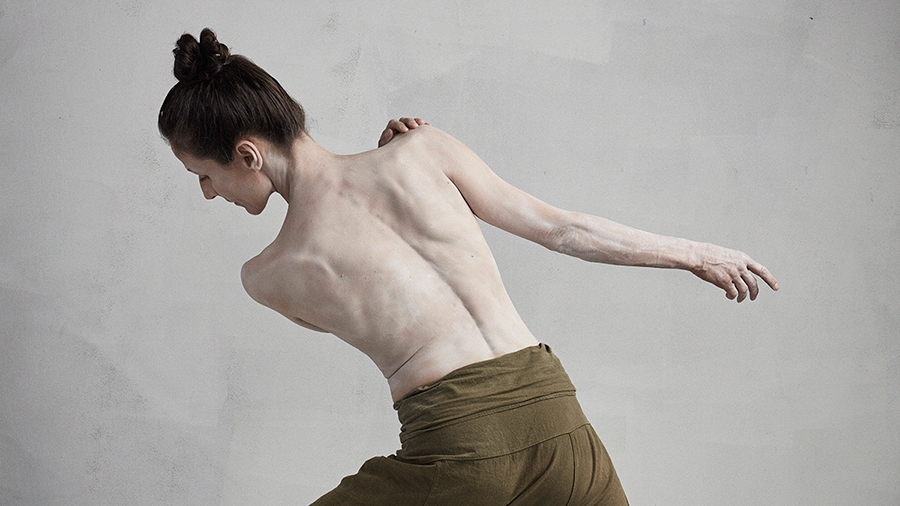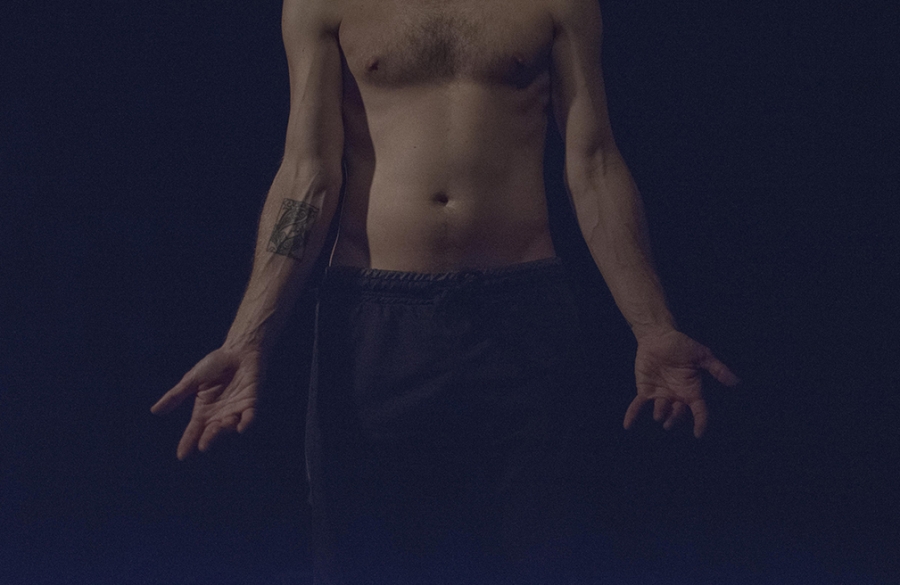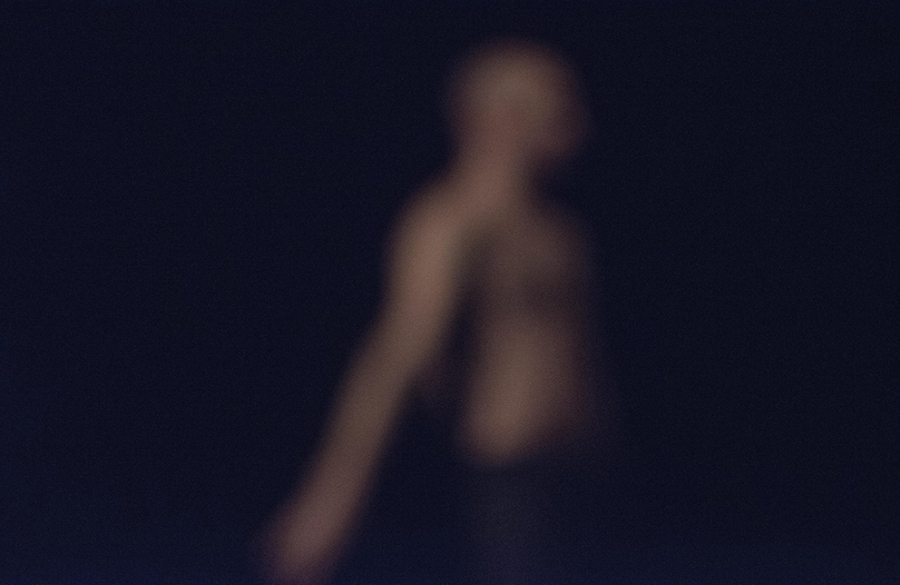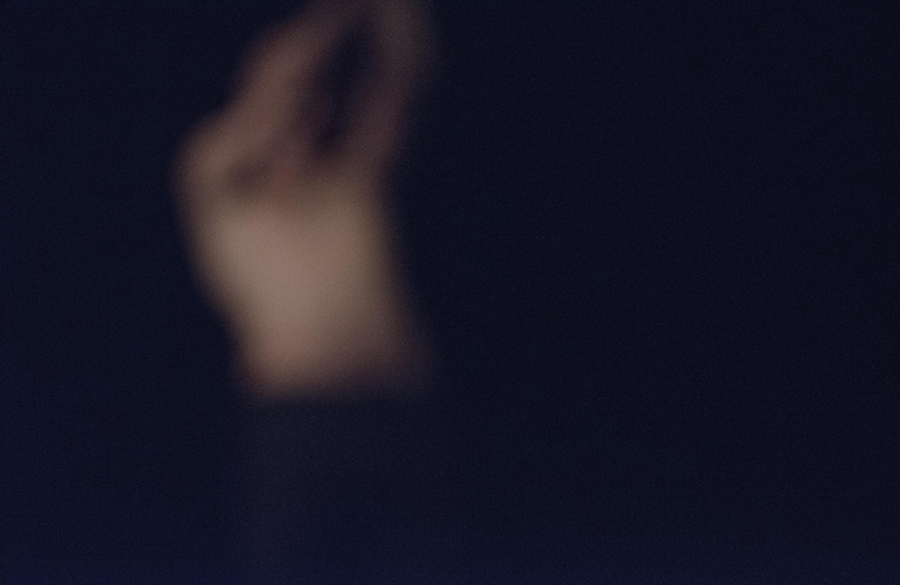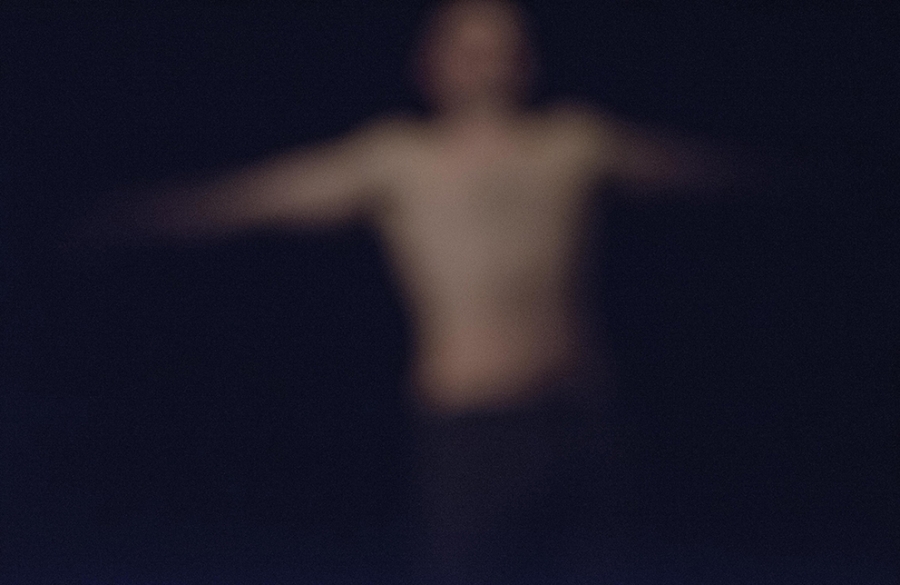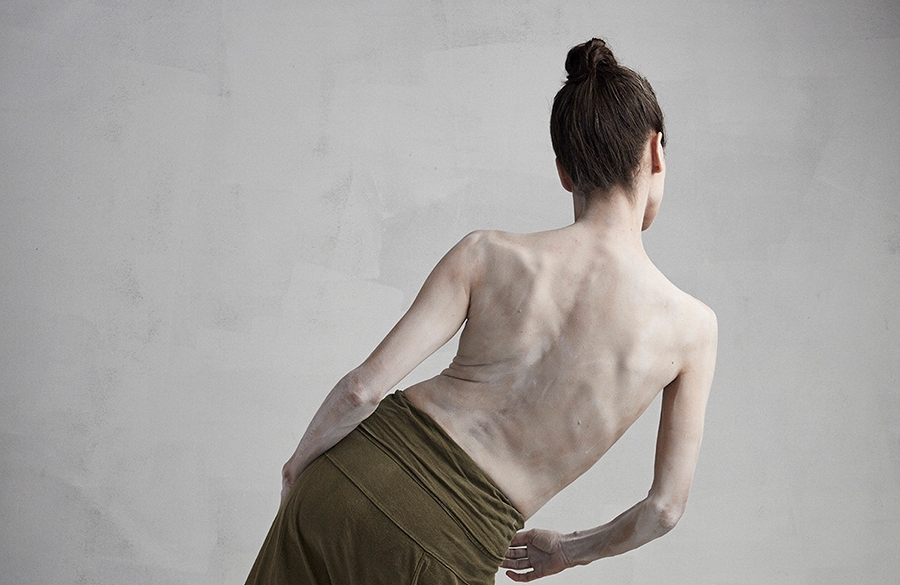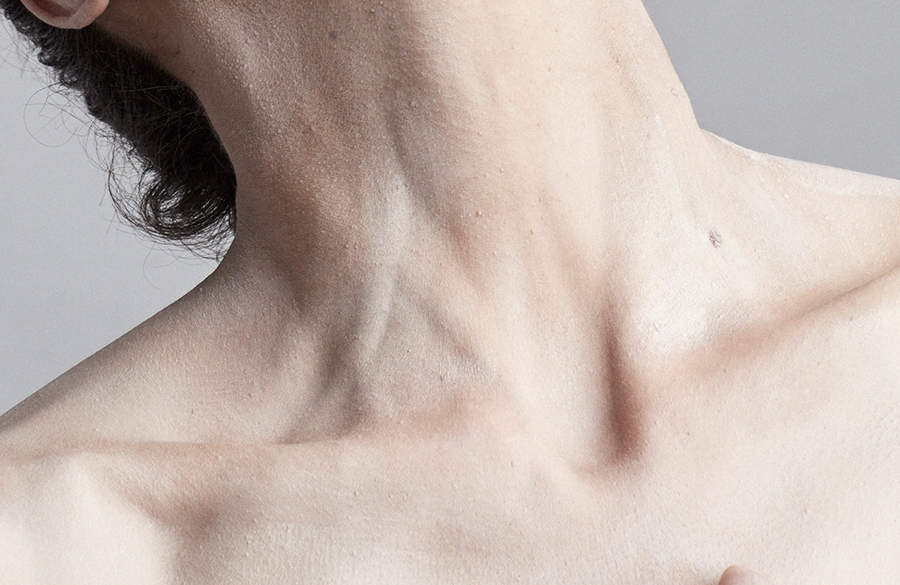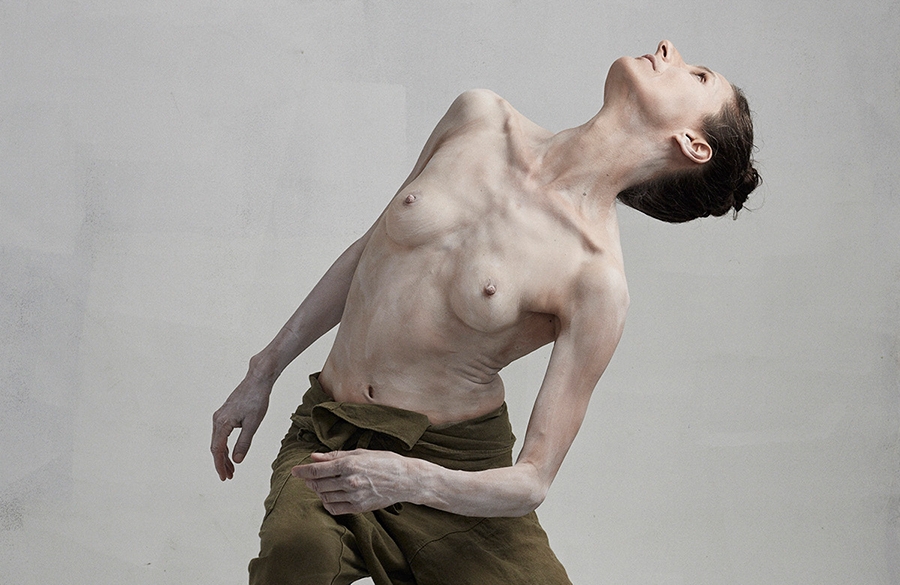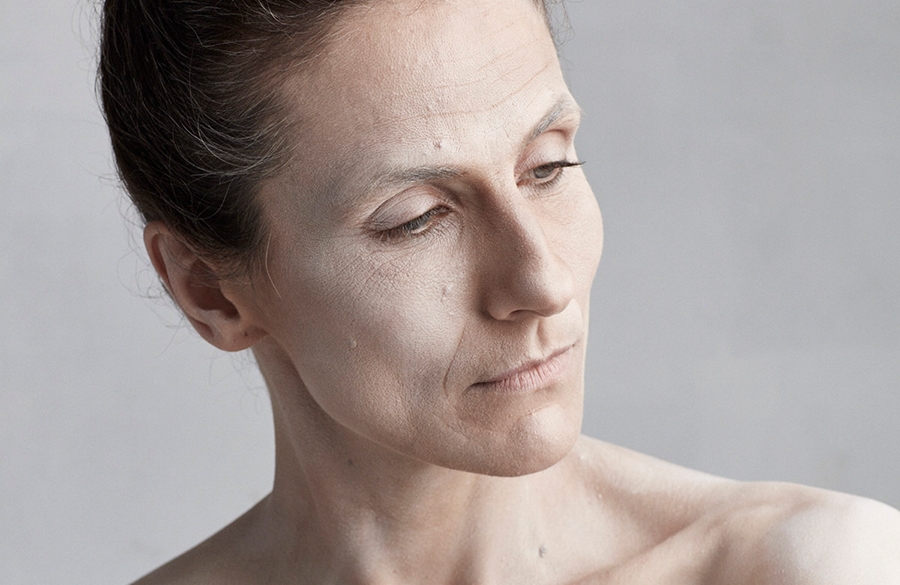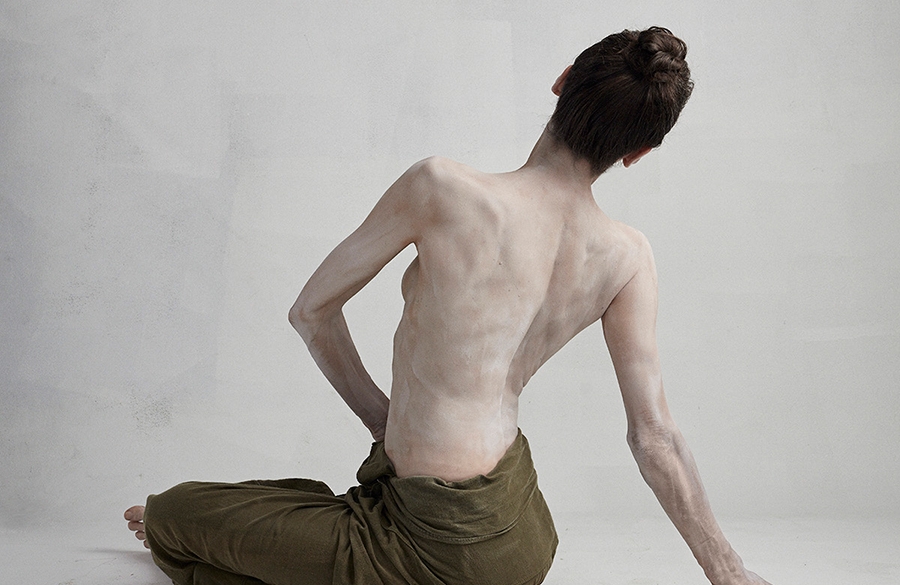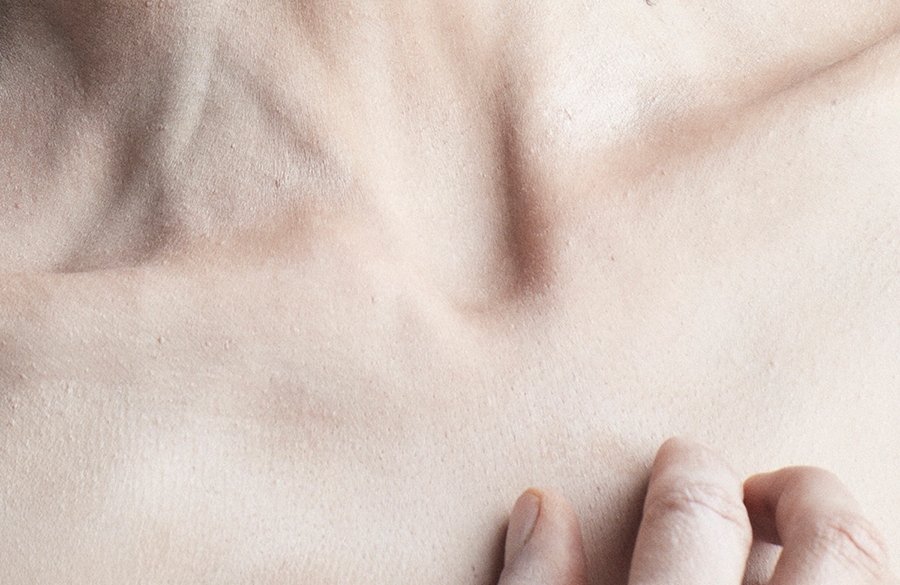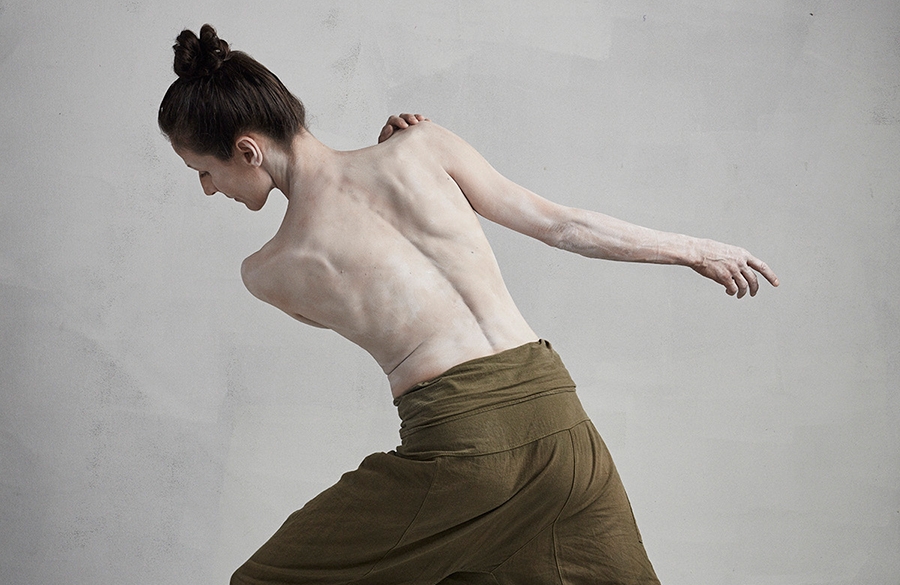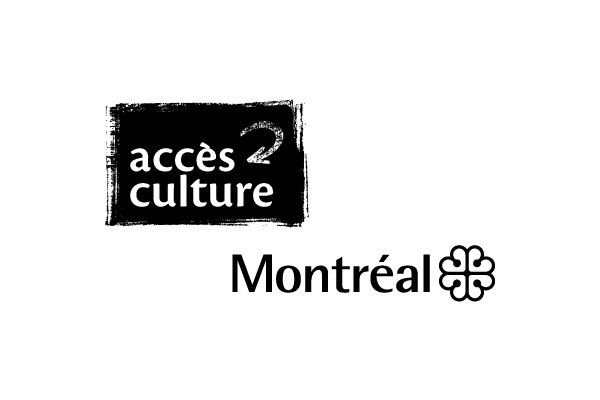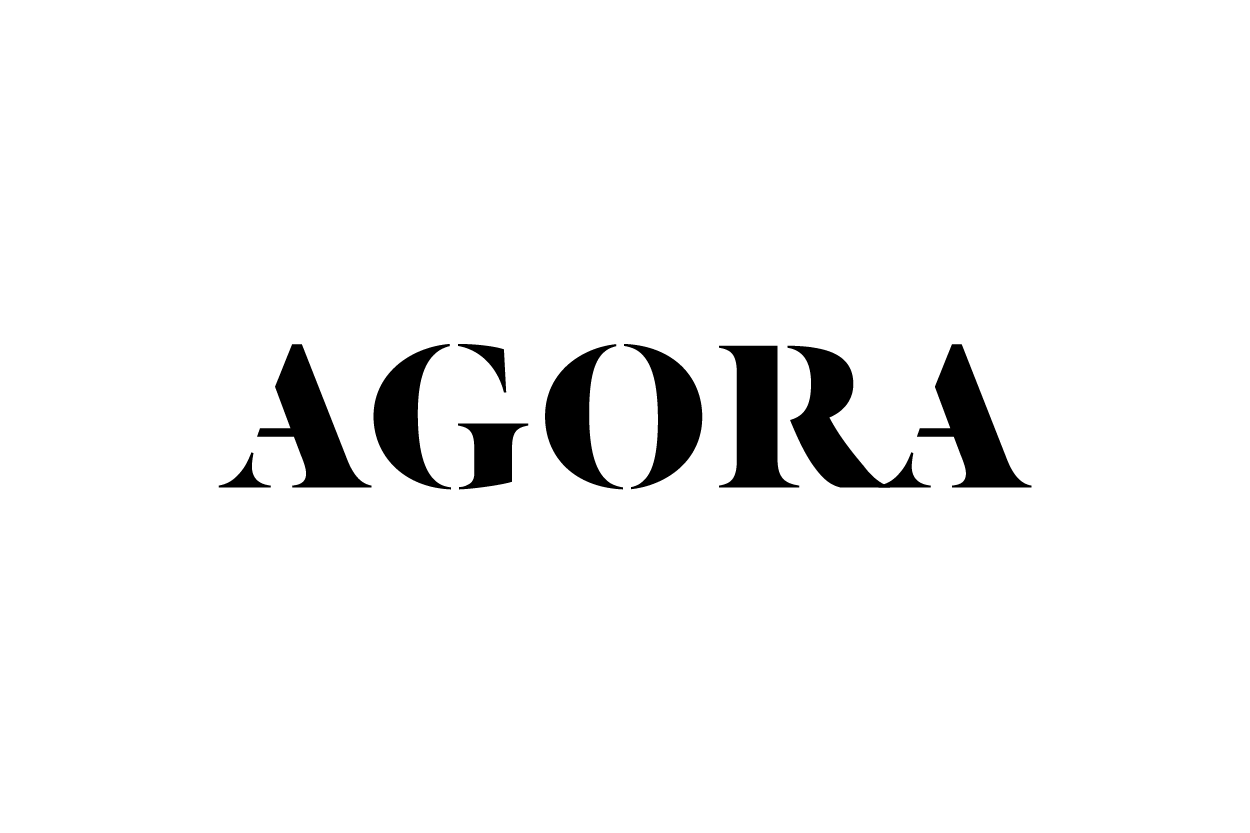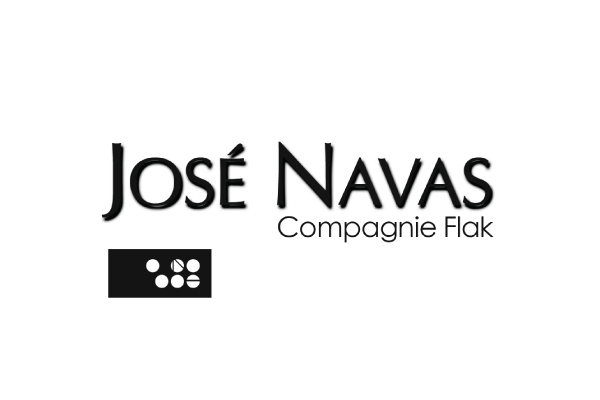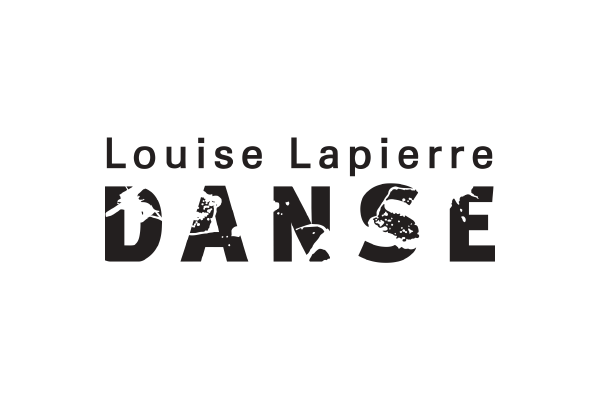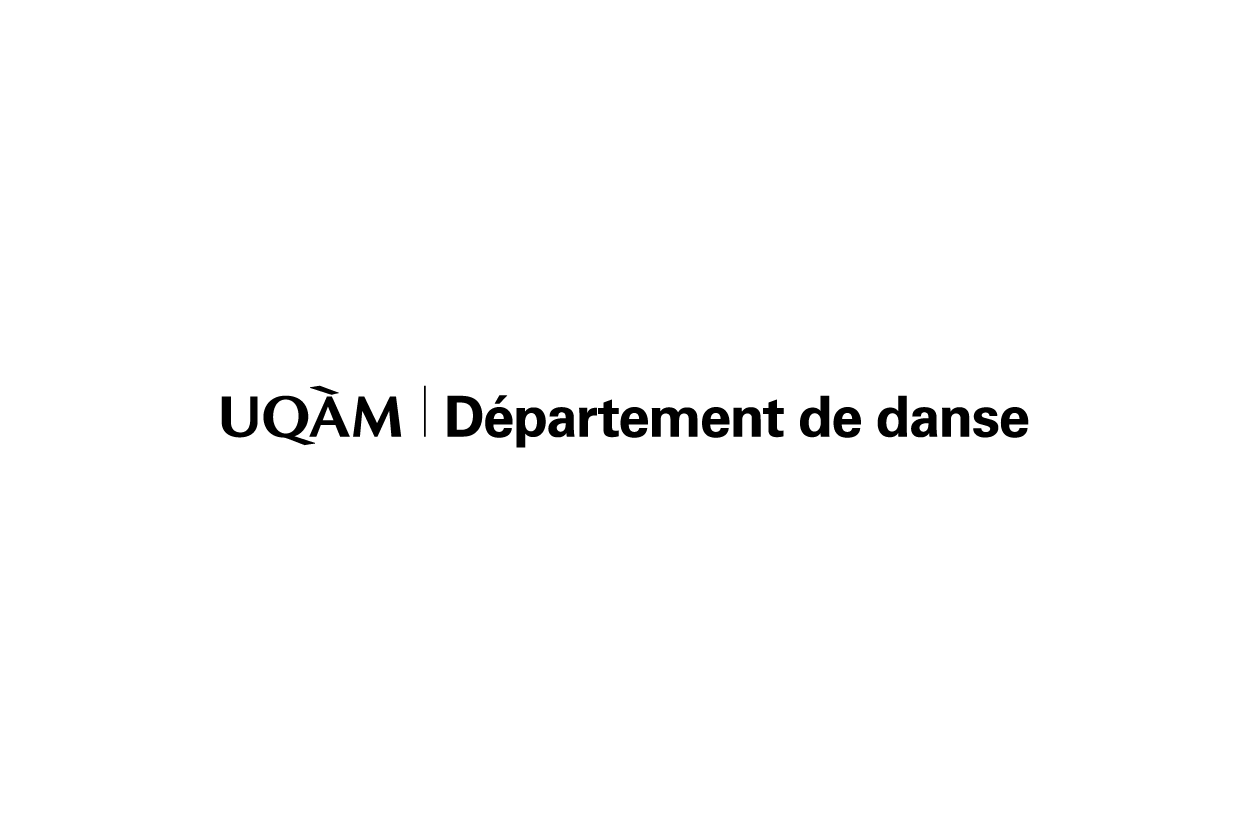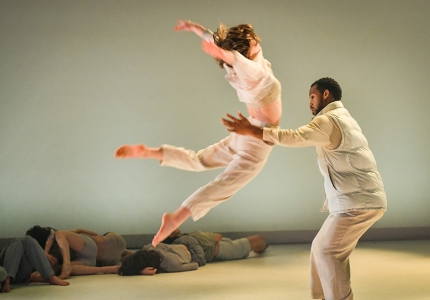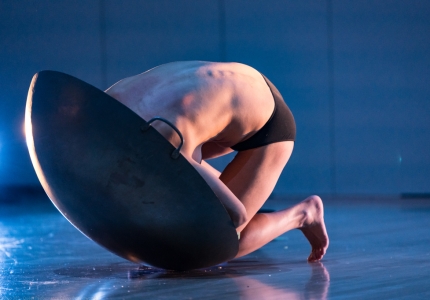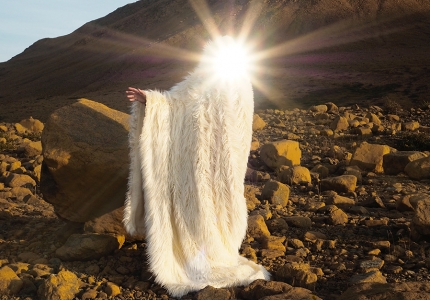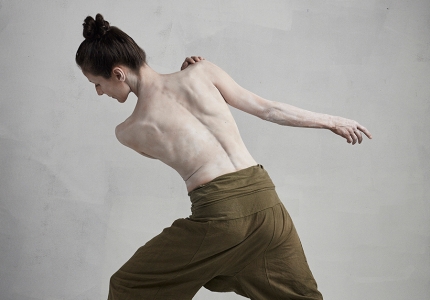Live show
Hugo Dalphond + Hélène Messier
**NEW TIME**
APRIL 15-17, 2021 - 5:45PM
APRIL 18, 2021 - 4PM
WARNING: This show contains stroboscopic effects.
Please note the new showtime for the April 15, 16, and 17 performances. The box office will contact ticket holders for those dates beginning Monday, April 12, to see if they wish to retain their tickets.
The order of the pieces is subject to change.
Hugo Dalphond
Étude sur la pénombre
Lighting that is minimal rather than minimalist. Hugo’s scenography enables the study of the spectator-performer relation of co-presence in a dim setting, through which a dramaturgy of darkness emerges. Since obscurity is hard for the eye to sustain, the situation engenders a different understanding of what is real. The limited perception of the space and of the artist’s movement blurs the borders between materiality and optical illusion. If the action doesn’t exist and it is the eye that creates its own dance, is the creator choreographing the experience as much as the body? What if the dysfunction of the senses opens up an alternative to reality?
Creator Hugo Dalphond
Performer François Richard
Composer Mathieu Seulement
Rehearsal director Sophie Michaud
Outside eye Andrea Peña
Lighting assistant Tiffanie Boffa
Hugo Dalphond questions synergy between body, space, and light by elaborating and building scenographic devices aimed at initiating meetings. It is principally by making viewers and performers coexist within a same space and by modulating their perception of that very space that he creates alternative sensorial experiences. This becomes a reason to engage in different co-presence qualities and thus to become aware of our interactions and relation with others. Since 2015, he tackles these questions in a PhD, which has for its subject light installation and the spatial opportunity it offers to rethink our collective states. He also collaborates on various theatre and dance projects as a lighting designer and a scenographer.
Born in New Brunswick, François Richard completes his studies at the Royal Winnipeg Ballet School. His professional career has taken him to more than twenty countries with companies such as Canada’s Royal Winnipeg Ballet, Les Grands Ballets Canadiens, José Navas/Compagnie Flak, Van Grimde Corps Secrets, Sylvain Émard Danse, PPS Danse, and AP&A. He has worked closely with choreographers such as José Navas, Sylvain Émard, Isabelle Van Grimde, Virginie Brunelle, Andrea Peña, Edgar Zendejas, Victor Quijada, Anne Plamondon, David Rancourt, and Roger Sinha. In 2011 he danced in the short film ORA, produced by the NFB and nominated for a Genie Award in 2012. For his solo UNTITLED I, a collaboration with Andrea Peña, he won the prize for best performer at Festival Quartiers Danses and for best choreography at the Hong Kong International Choreography Festival in 2018. François has taught for schools and companies, including Concordia University and BJM. In 2014, he joined the board of directors and the teaching faculty of Danse à la Carte. Today he is a teacher and independent artist based in Montréal.
Mathieu Seulement is an electronic musician from Montréal. He started as a member of the trio Technical Kidman with whom he released two albums. Most recently, he debuted his new solo project SEULEMENT as part of OK LÀ’s 2018 line up. He also regularly works with multidisciplinary group projets hybris, for whom he acted as musician and composer on youngnesse, their latest show presented at La Chapelle Scènes Contemporaines in 2018, and on thegiftsofthegifted presented at DHC/ART as part of Montréal’s Nuit Blanche 2018. Additionally, he worked on the music and sound design for Montréal collective For Fauve and for Hugo Dalphond’s performative installation Dans l’idée de ne plus être ici, both presented at Tangente in 2018. Aside from working on his own music, he is currently working on a new creation with Hugo Dalphond and is a member of the new band Météo Ciel Bleu.
Tiffanie Boffa is a creator, performer, and designer. She has been doubling as a professional contemporary dancer and designer for three years now. She graduated from Concordia University in 2020 with a Bachelor of Fine Arts in Design for the Theatre. She is particularly interested in lighting, using it to create sensorial-visual atmospheres informed by her background in dance. Her lighting designs can be seen in both theatre and dance, from the image-based creation Maríc at the Lake, directed by Cathia Pagotto, to dance with Mandala, created by Kurtis Mitchell, and the sensorial experience of Polymorphic Microbe Bodies, co-choreographed by Erin Robinsong and Hanna Sybille Müller, presented by Tangente.
Étude sur la pénombre is part of a body of work on the use of light in art. I work towards extracting myself from tendencies that often reduce lighting to a technological innovation or to a method of composition for the spectacular. These ideologies value elaborated apparatuses detached from a sincere relation to the real, which to me fails to inform us on the world in which we live. On the contrary, I am interested in deepening the relational potential of light. I am interested in understanding how light composes space, how it reveals present bodies, how it carves spatialities, and how its behaviour alters our perception of time. The situations thus generated questions the immediacy of the experience and the sensitive dimension of our relationship to light, space, and bodies. I therefore explore a somatic approach that focuses mainly on the organization of the spectator’s attention and on the succession of different states of perception.
Hélène Messier
SOIE
How does one inhabit a pose? Evoking Butoh and art modelling, Hélène is looking to reach a meditative state that she shares with the audience. In a room where walls and ceiling disappear, she creates a neutral space, at once nowhere and everywhere. Based on imaginary and sensitive impulses, she allows her body to be so that it can become a work of art, a landscape. Minimalist gestures, slowness, movement repetitions and a waltz with tempo establish a non-time, or a return to a universal time.
Choreographer and performer Hélène Messier
Rehearsal directors David Rancourt, Annie Gagnon, James Viveiros
Lighting designer Hugo Dalphond
Composer Vincent Gagnon
Costume designer Julie Pichette
Hélène Messier was trained in Butoh, mainly by Mario Veillette, and has also studied with the following teachers: Denyse Fujiwara, Paul Ibey, Jocelyne Montpetit, Yoshito, Ohno, Diego Pinon, Martine Viale, and Yumiko Yoshioka. She has had the opportunity to dance for Mario Veillette, Katia-Marie Germain, and Ample Man Danse Company. She is currently engaged in a creative process with Sara Dell’ava. She also collaborates several times with Manuel Shink and Clarisse Delatour. Having completed a Bachelor’s degree in Choreography at Concordia University, her creative work is based on the sensitive imagination, accessing different states, as well as somatic work, creating deep, sensitive, and poetic worlds. Her creations have been presented at Short and Sweet (FTA), Danses Buissonnières, Piss in the Pool, and Quartiers Danses. Hélène completed her Master’s in Dance at UQAM, studying the relationship between a presence that is attentive to internal impulses and the experience of the spiritual in her practice of Butoh. She has also been practicing mindfulness meditation for about ten years, in addition to working as an artist’s model for four years. These practices also form part of her artistic approach and nourish her spiritual quest.
Hugo Dalphond questions synergy between body, space, and light by elaborating and building scenographic devices aimed at initiating meetings. It is principally by making viewers and performers coexist within a same space and by modulating their perception of that very space that he creates alternative sensorial experiences. This becomes a reason to engage in different co-presence qualities and thus to become aware of our interactions and relation with others. Since 2015, he tackles these questions in a PhD, which has for its subject light installation and the spatial opportunity it offers to rethink our collective states. He also collaborates on various theatre and dance projects as a lighting designer and a scenographer.
An artist in dance, David Rancourt has mainly been a performer since graduating from LADMMI. His work with many choreographers brings him to experience a wide range of visions of art and movement, and allows him to dance on both local, national, and international stages. He collaborates with artists Alan Lake, Pierre-Paul Savoie and Annie Gagnon, and on projects with Caroline Laurin-Beaucage, Aurélie Pedron and Ariane Boulet. Passionate about the arts of movement and breath, he has been practicing the Continuum with Linda Rabin and Qi Gong with Marie-Claude Rodrigue for more than fifteen years. He is also part of the Fragments Libres school team. As a creator, his choreographic works take several forms: Temps / espace, an installation and performance as part of the first anniversary of Maison pour la danse in Québec City; and several short forms that fit into three PPS Danse productions: Chairs, Dance Lhasa Dance, and Body, Love, Anarchy Leo Ferré. As an outside eye and artistic advisor, let’s mention his collaborations with Edgar Zendejas at Ezdanza and with Myriam Allard and Hedi Graja from La Otra Orilla.
Through SOIE, I became interested in the attentive presence oriented toward inner impulses as a means to nourish spiritual experiences. For me, the spiritual is a quest of profound understanding by the intelligence of feeling of the fundamental essence of human beings in their relation to the world. What I convey in SOIE is this very quest. I explore it through notions of contemplation, of attentive presence, of laying bare, of openness between the world and my own intimacy. Strongly inspired by meditation, Butoh, and live modeling, SOIE is an introspective moment experienced from sculptural postures, as well as minimal, subtle, delicate or repetitive movements embodied because of an inner necessity. Laid bare, the body is simultaneously nature, landscape, and vehicle for something bigger.

